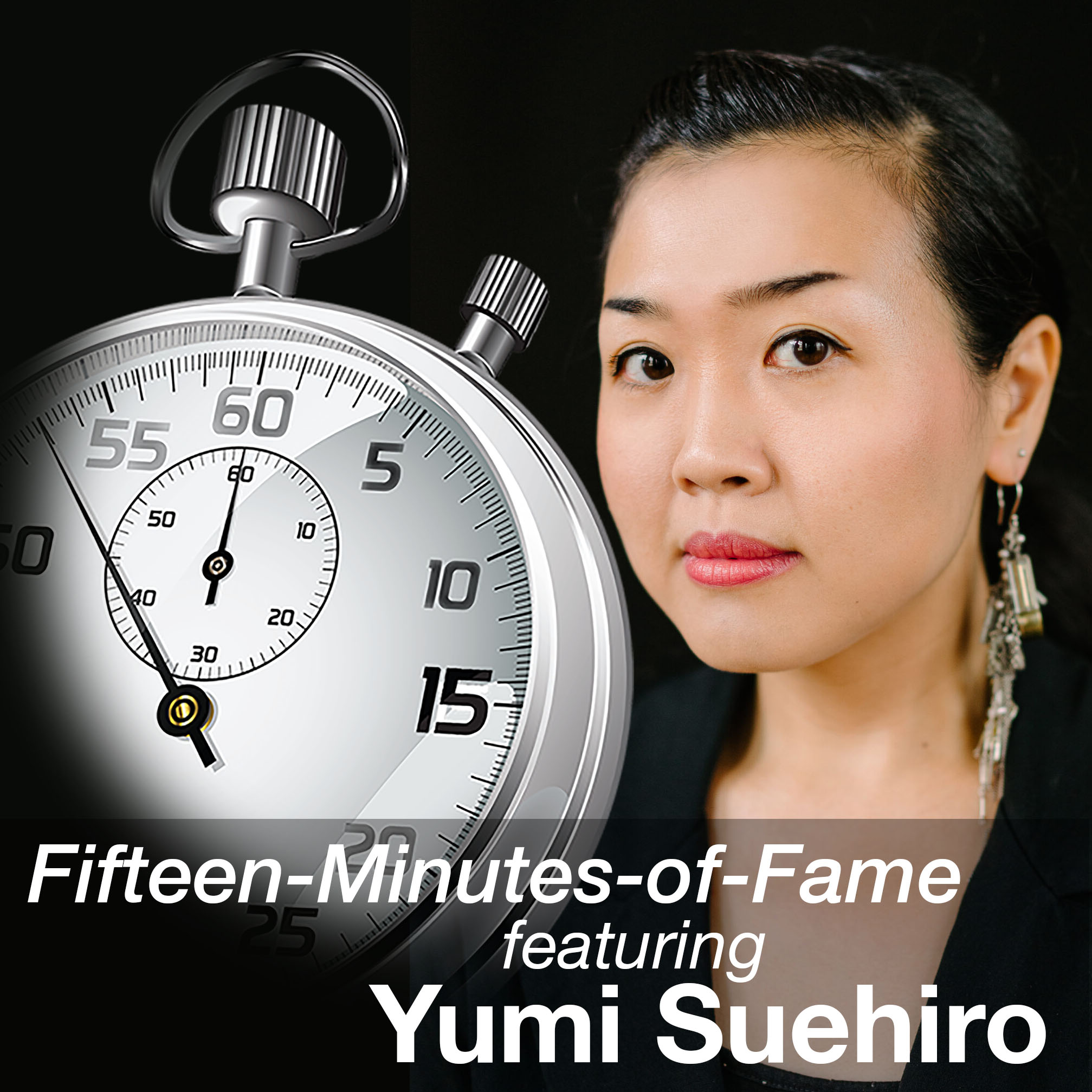| Click Here to View Issue June 7th, 2025 | |||||||
|
|||||||

|
|||||||
Celebrating 15 Years of Fifteen-Minutes-of-Fame: Creating and Selecting for the One-Minute FormBy Lauren Dean
When producer and composer Robert Voisey developed the Fifteen-Minutes-of-Fame project the idea of presenting short works came about in order to showcase composers who may not otherwise have the chance to be heard at a chamber concert—especially not one with a global audience. Thus began the format of selecting fifteen one-minute works to create a single fifteen-minute-long performance. Since 2009, more than eighty musicians or ensembles have taken up the role to play a selection of works, primarily by emerging composers, giving them a set of original pieces to premiere. With multiple calls per year, thousands of submissions have been received, with more than 600 composers being selected. But what exactly goes into the selection process? And how do performers go about the task of creating this musical tapestry? 
“I have worked with hundreds of composers, and absolutely the most unique overriding characteristic of the community of composers who choose to submit to Fifteen-Minutes-of-Fame—and there are thousands of them—is their love of the short/miniature form, enforced by the one-minute structure and the various suggested themes,” says solo cellist Craig Hultgren, who has had two calls with Fifteen-Minutes-of-Fame. 
“The question arises: how can a composer compose a work, convey an idea, build a form, within 60 seconds?” asks Stas Venglevski, who has participated in the calls as both a composer and Bayan accordion player. “[It’s] some kind of marathon. But it's possible. This is the beauty of this project, and where a difficult task emerges for the composer and performer—how to create a large or small image while limiting oneself in time.” This idea of the large and small image is what Fifteen-Minutes-of-Fame rests on, as composers aim to tell a story in as little time as possible, and musicians strive to collect those ideas and tie them together into a cohesive whole. 
For harpist and composer Alyssa Reit, who has also been on both sides of the calls, the task was to represent as many kinds of music as possible, while maintaining quality. “I wanted contrast, but also an overall flow and a sense of an arc, so that it didn’t feel like just a sequence of pieces,” she says. “Sometimes it was hard because sometimes pieces were a similar genre that were all good.” In the end, it had to do with how the works flowed, not the caliber of the pieces that weren’t selected. 
“Many of the pieces flowed together. It was impressive,” notes soloist and French horn player Mary Beth Orr while describing the process of narrowing down the selections for her 2023 call. Once she had it down to thirty, the eliminations got more difficult. Ultimately, she asked herself if the works fit her artistry, or would stretch it in some way, but also, “Is there a story in this music for me?” 
In the case of oboist Robert Botti, understanding each piece took time, in order to derive some sense out of it. For him, it was about connecting to each piece and asking how one would segue into the next. What kind of voice would it create? How would it hold together as a whole? And how would it be received by an audience? 
Soprano Jenny Ribeiro asked herself similar questions as she prepared for her 2024 call. Back in 2011, when she first performed with Fifteen-Minutes-of-Fame, she wasn’t thinking in terms of programming. “Now I would think of them as a dramatic arc,” she says, adding that she will pick them for ‘singability.’ “When composers write for voice, they can produce crazy effects, but for me, I want to tell a story.” This time, she’s focused on choosing works that give back to the audience. 
Similarly, “I didn’t want the audience’s ears to get tired,” says composer and pianist Monica Chew, who played clavichord for her 2023 Fifteen-Minutes-of-Fame debut. Not wanting too much repetition of the same kind of music, “I was interested in creating a series of feelings that don’t go on too long for the audience.” 
And while “integrity” was a major selection criterion for guitarist and composer Rodrigo Baggio, “improvisation” was really at the heart of his set. “The pieces had one thing in common,” he says, “experimentation and the theme of the call, [each] showing a different thing in terms of musicality.” In that sense, maybe paradoxically, the common thread was that all were distinctly experimental. 
“I liked the idea of working with multiple contemporary composers in short works,” says classical pianist Stephen Porter, who asked for a series of pieces “Re-Imagining Debussy” in his first call. “A fifteen-minute piano ‘piece’ is a significant length, and the format of short pieces allows you to curate a program that has shape and variety, and gives an introduction to the wonderfully different styles of composers from around the world.” Preparing for his second round in 2025, and adding that what attracted him to the project was its limitlessness, Stas Venglevski concludes, “All the works seem to have one idea with different tasks. Together they are like a single whole.”
|
|||||||

|
|||||||
|
This special edition on NM421 is the third of a special 5 part series of interviews with musicians who have been featured on Fifteen-Minutes-of-Fame. The first installment was published on February 8th, 2025. The second installment was published on March 8th, 2025. The third installment was published on April 12th, 2025. The fourth installment will be published on May 3rd, 2025. |
|||||||
|
|||||||

|
|||||||
|
Click Here for upcoming events with Vox Novus Subscribe to the Vox Novus channel on YouTube And always, thank you for your support! |
|||||||
|
Click here to Subscribe / Unsubscribe |





